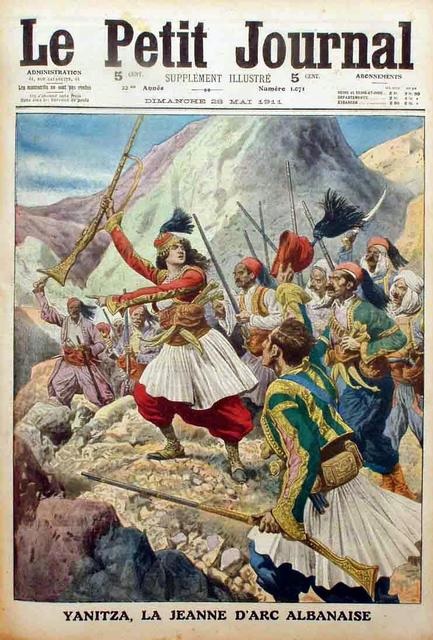 |
| The portrait of Tringë Smajli in an exhibition at the National Museum of Photographs Marubi in Shkodra |
 |
| Postage stamp with the portrait of Tringë Smajli |
At the time of her brothers' death, Tringa became a sworn 'burrneshë' (sworn woman to live like a man) and wore men's clothes to live as a man in the patriarchal society of Northern Albanians of the time.
Tringa joined the insurgents and distinguished himself in the battle of Deçiq (today the city of Tuz in Montenegro). She participated in the Greek Memorandum on June 23, 1911. Her rebellious activity continued even after the declaration of independence of Albania.
Tringa died on November 2, 1917, and was buried in the family cemetery in the Gruda Mountains within the village of Kshevo, today in Montenegro. Two years later, the Montenegrin army (part of the Serbo-Croatian-Slovenian kingdom) destroyed her tomb during an invasion of the area.
Her heroism made her famous and epic Albanian songs were written about her. The folkloric version of her heroism shows a slightly different chain of events: Smajl Martini, the clan leader was abducted in 1911 in Vranje by the Ottomans and his body was never found, forcing Tringa to take her father's place.
 |
| Smajl Martini and his doughter Tringë |
Since the highland revolt in 1911 was supported by King Nikola Petrovic, the epic song ruled out the true story of her father's death, hiding all memories of the Prizren League period, which will restore territorial disputes between Albanians and the Kingdom of Montenegro.
 |
| The French newspaper Le Petit Journal portrays Yanitza as "La Jeanne D'arc Albanaise", |
Ironically, the conflict between Albanians and Montenegro will be repeated a little later. In 1911, The New York Times described Tringë Smajli as the Albanian ′Jean Jean D’Arc', based on the story in the Montenegrin version, which the Times correspondent had heard somewhere in Podgorica.

